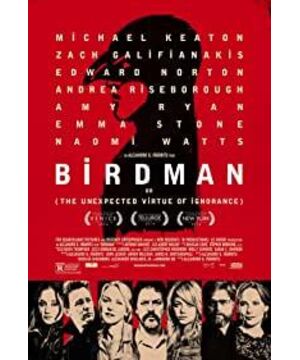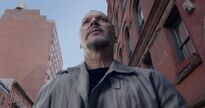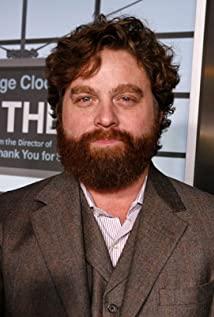When you talk about long shots, you have to talk about Bellatar. His obsession with long shots is a little crazy, and the use of skills is also superb. He can complete scene changes within a single shot, maintain smooth movement, and at the same time schedule actors complex and precise. Most importantly, he always has a poetic grasp of light and shadow.
There is also Roy Anderson, a low-yield long-shot director with a distinctly personal style. In recent years, with the awards, his fixed-length lens has gradually attracted attention. He often stubbornly uses only one fixed lens in a scene. Broaden the narrative level of the two-dimensional plane through the use of depth space. The actors' performances are highly stylized. After watching his movie, not only did he not find the fixed long lens boring, but because of the detailed design, he felt humorous.
More directors have integrated long shots into "normal" movies, appearing as colorful chapters, such as Alfonso Cuarón's "Son of Humanity", or Joe Wright in his three movies The pursuit of camera sports beauty.
No matter how long the above long shots are, they are all limited to the concept of time and space of "scene", and the shots will inevitably be interrupted during the transition. Therefore, when "Birdman" was released, it was able to cause such a sensation. Gonzalez used forged long shots to span time and space. In order to achieve this effect, various "fancy" transitions are indispensable. We have also been able to appreciate: "How many ways are there to camouflage the footage under the eyes of the audience." The various technical difficulties can be imagined. From this point of view, the Oscar of "Birdman" is also considered to be well-known. Return.
However, in addition to difficulty, the standard for evaluating the technical quality of a film should also include: "Is it necessary to do so?" Long shot is a very special film language, but in the final analysis, it still serves narrative. A good director should not only pursue technical difficulty, but should know how to use appropriate audiovisual means to achieve his own narrative purpose.
So in "Birdman", is it necessary to not cut off the camera?
To answer this question, we must first know what story "Birdman" tells. We saw an outdated film actor, hoping to return to the audience's vision by relying on a self-directed and self-acted play. He fears failure, fears being forgotten, and is sensitive and suspicious of people and things around him. And his desperate drama, from rehearsal to performance, has been in frequent situations. . .
The protagonist often has hallucinations, sometimes sinks into the glory of the past, and sometimes imagines reality. In the movie, a large number of hand-held follow-up shots, dim lighting, and sometimes close-ups of characters with wide-angle deformations are used to fit the protagonist’s unstable mental state. And the shaking long lens adds to the sense of realism and tension, as if we have been following him closely, sharing the slightly neurotic spiritual world with him.
It can be said that in a single scene, a long shot is very suitable for telling such a story with a subjective perspective. But back to the problem at the beginning, a two-hour movie needs to be completed in one go. The technical problem of time and space conversion must be overcome. The creativity of "Birdman" is also reflected in these "fancy" transitions, and creative ideas can be seen everywhere. For example, when the camera in the dressing room turns, the actress is already reading her lines on stage, and the rehearsal begins, and the protagonist gets dressed and prepares to play. Time and space are folded in one shot, but the audience will not feel discomfort at all. For another example, the doors in various locations are like random doors, from indoors to outdoors, and the characters are immediately placed where the director wants them to go. A lot of cutscene was omitted. The jumpiness and tension created by this are, again, very consistent with the protagonist's mental state. It's like the evaluation given by the mean critic after the first performance and the blood spilled on the stage: "Surrealism". We followed the protagonist and walked the entire movie in his tight nerves. From content to form, this kind of "surrealism" is permeated.
However, in the second half of the film, some transition methods were reused, and the genius of genius disappeared, leaving only some deliberate pursuit of form. There are at least two such transitions in the film. When the dialogue in a scene ends, the camera slowly shakes to the tall building, the characters are eliminated, and only an empty mirror is left. After a while, in the still shot, the night scene changes to day scenes (or day scenes to night scenes), the camera shakes down, and the action continues. These two meaningless shots are put together to create the illusion of "I am a long shot", which is completely meaningless in terms of narrative. Mind is used here, and it has become a performance art of dazzling skills. To put it mildly, it's even a waste of screen time.
Finally, let's return to the question, is it necessary to play "Birdman" in this way? The answer is yes. Long shots are very suitable to show the protagonist’s mental instability and extreme anxiety. This almost crazy form is not a psychotic story that cannot be controlled at all. On the other hand, the story line of "Birdman" is actually very simple. If it is not for the "one mirror to the end" sense of form, the viewing process will become tedious. Although in the second half of the film, it began to show off its dazzling skills, in general, this is a good film with a powerful narrative in its form.
Director Gonzalez is a good player who loves playing forms. With "21 Grams", "Love is a bitch", and "Tongtian Tower", he played the three-stage style in the movie almost to death. And "Birdman" proves to us that he can go further in the way of playing form. . .
View more about Birdman or (The Unexpected Virtue of Ignorance) reviews










